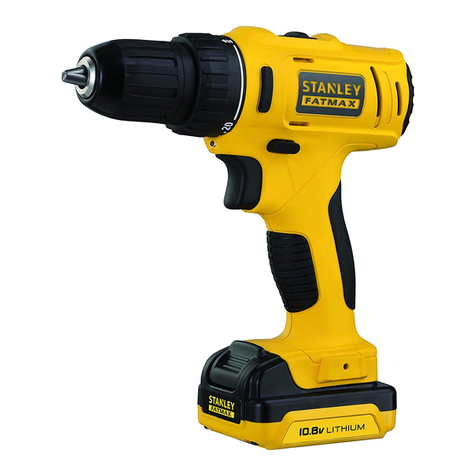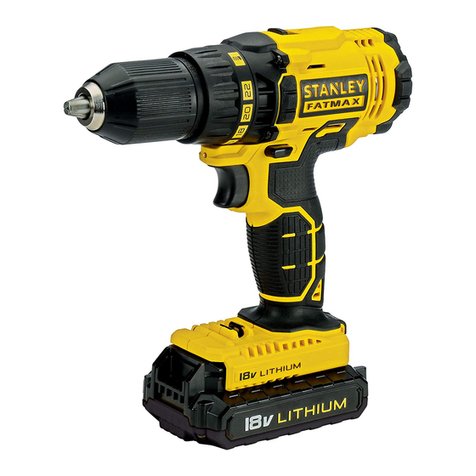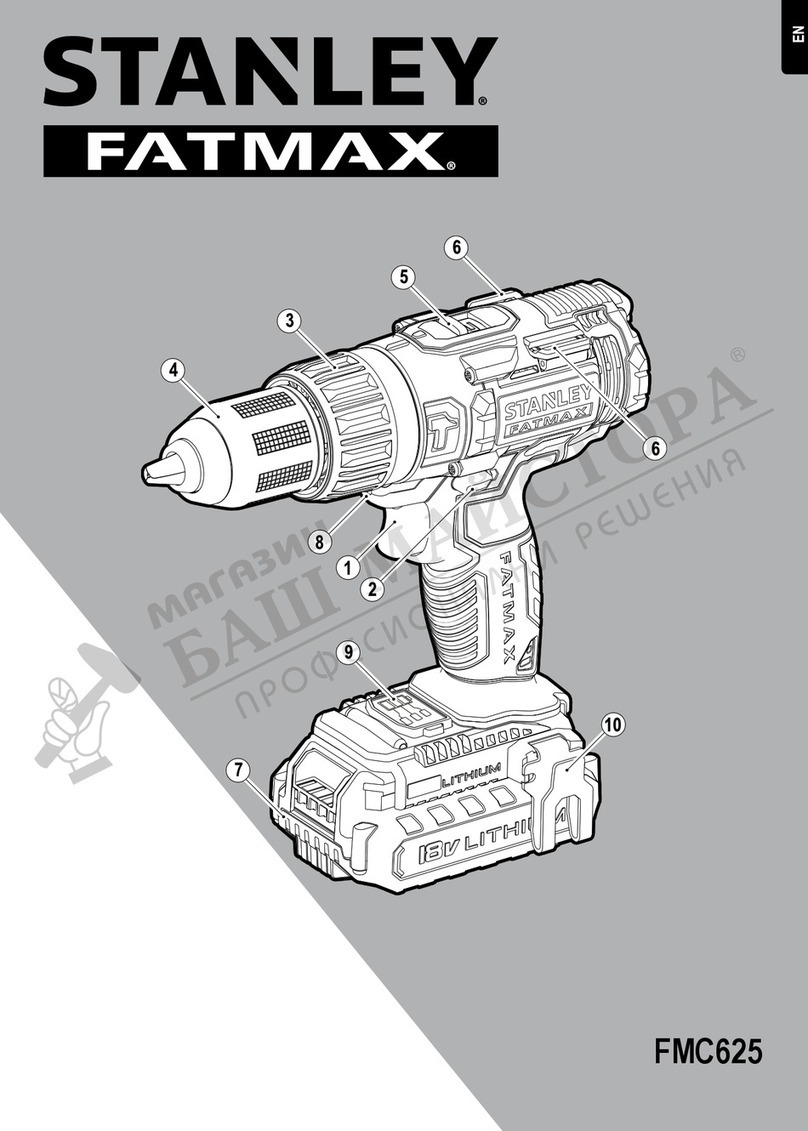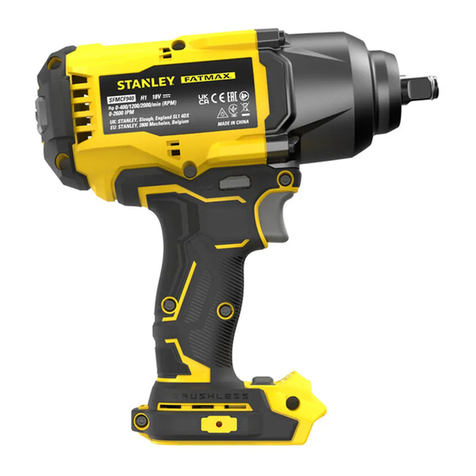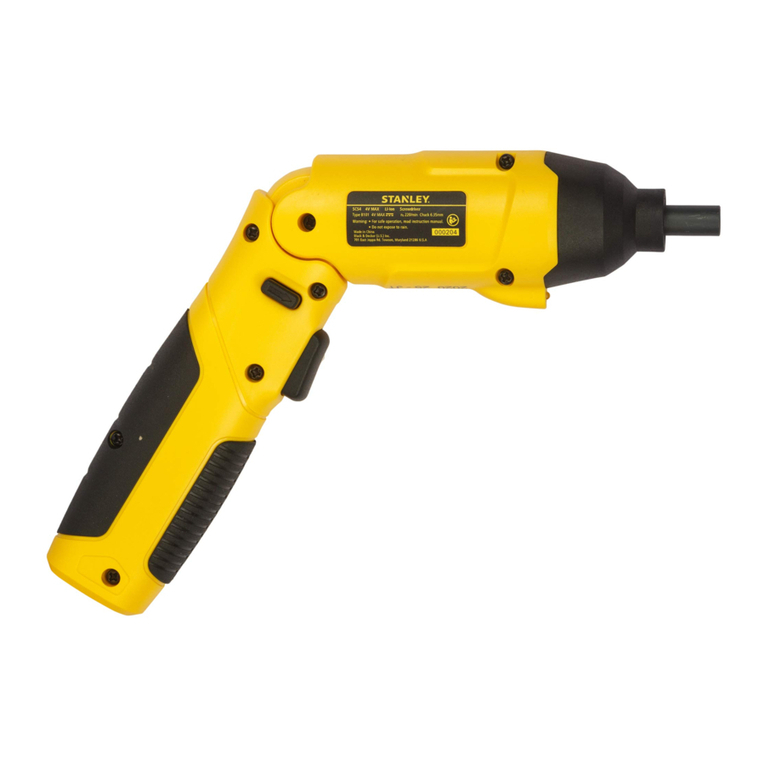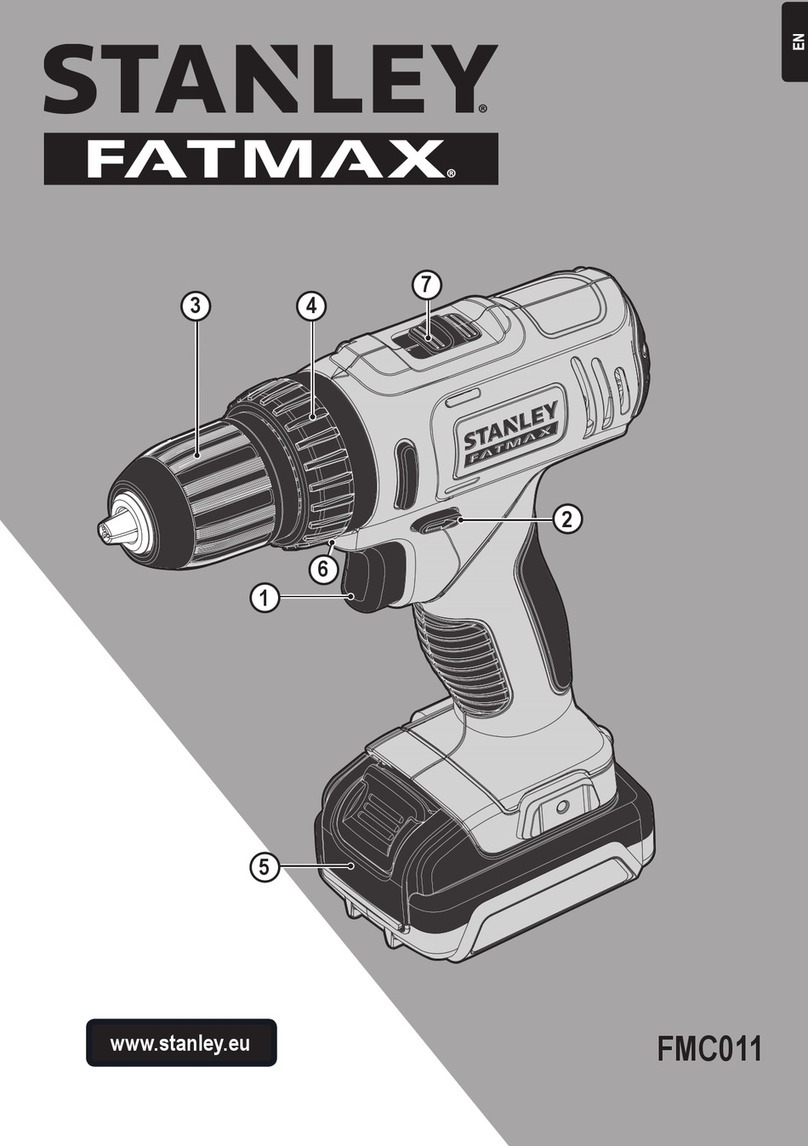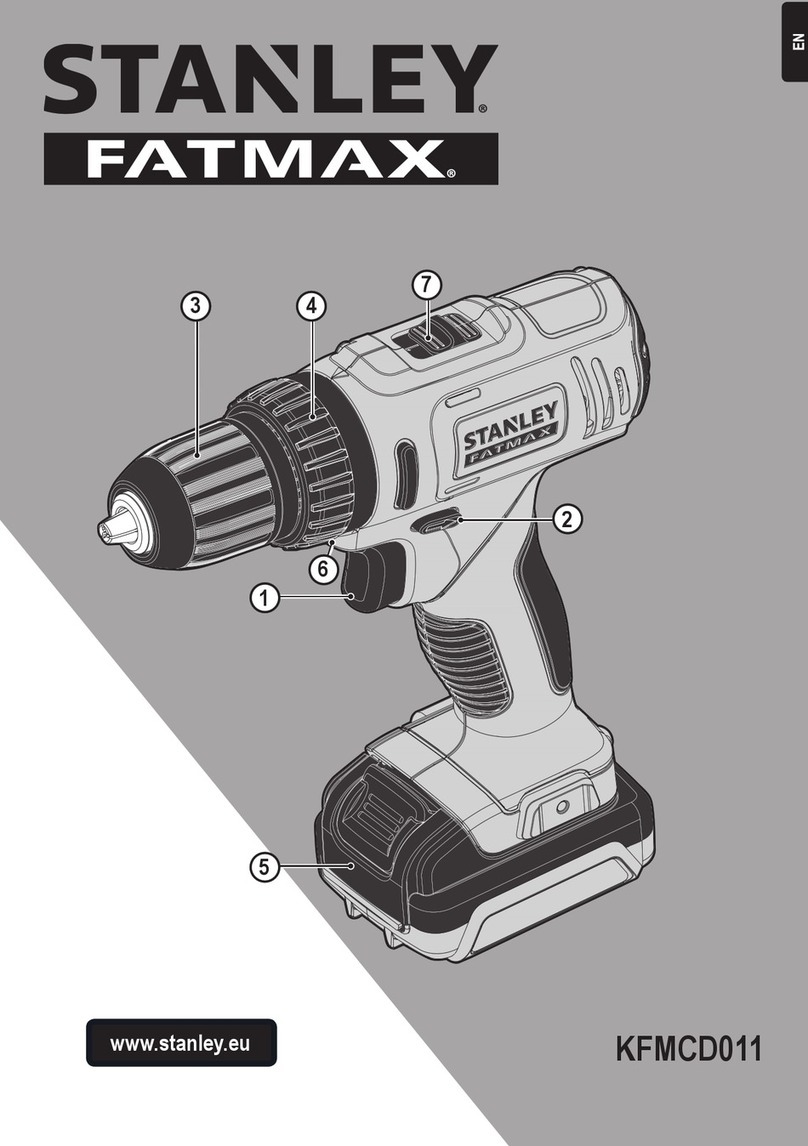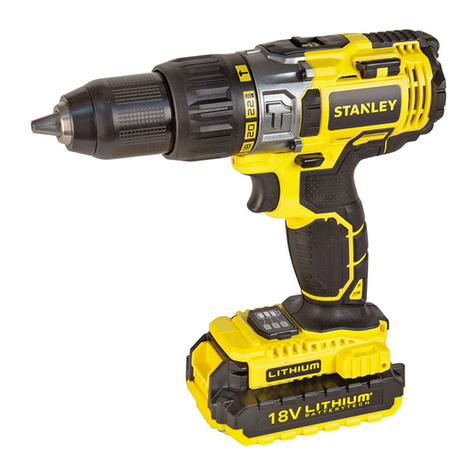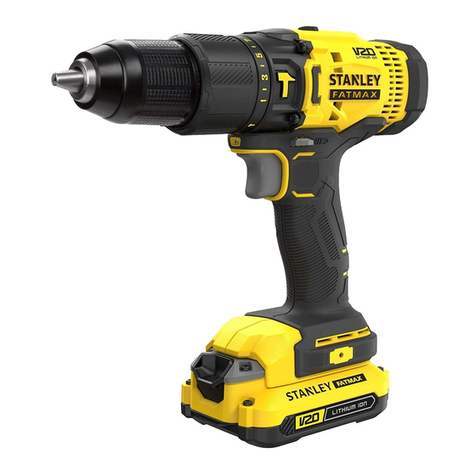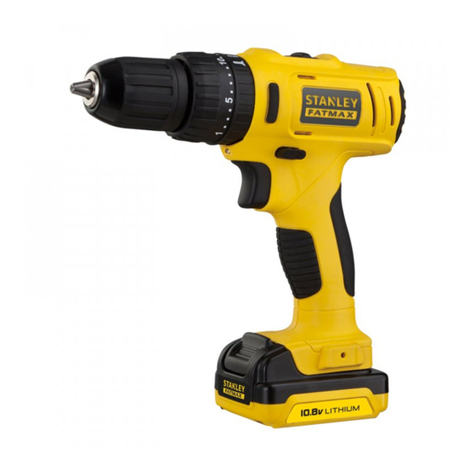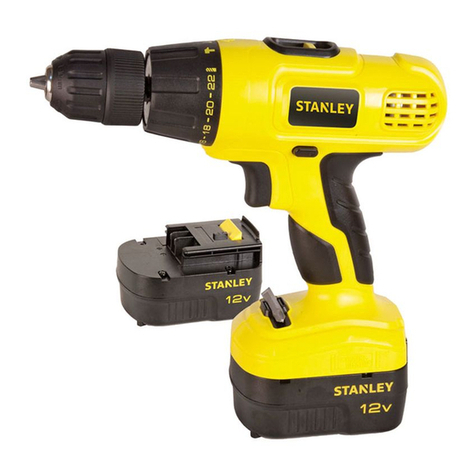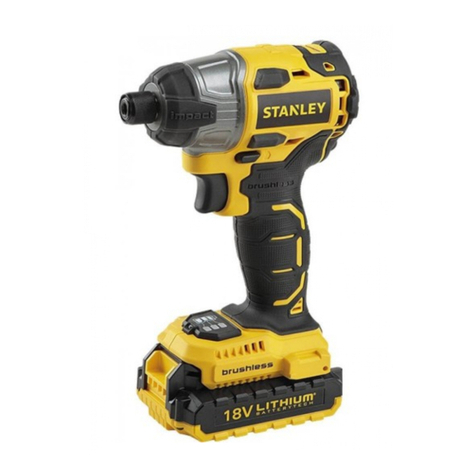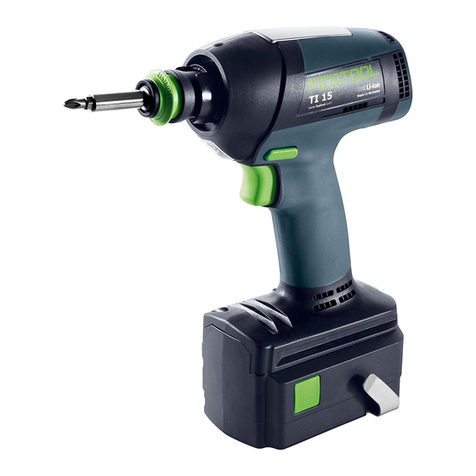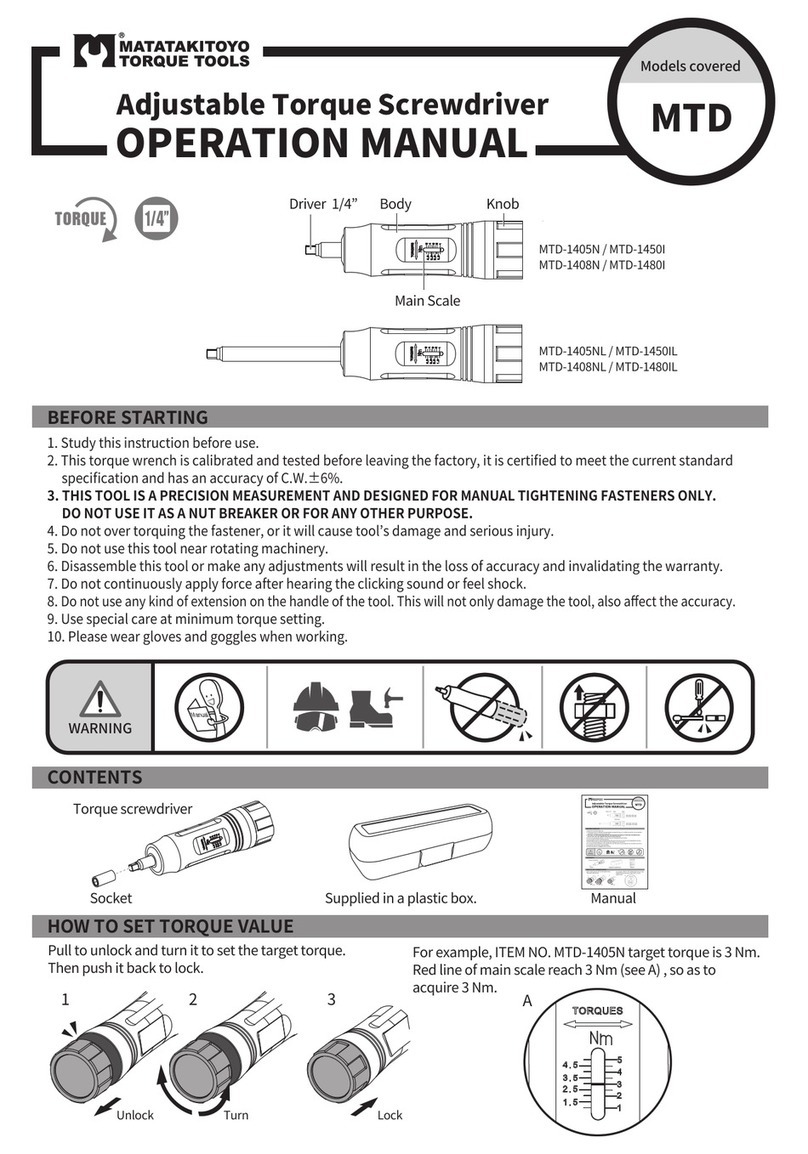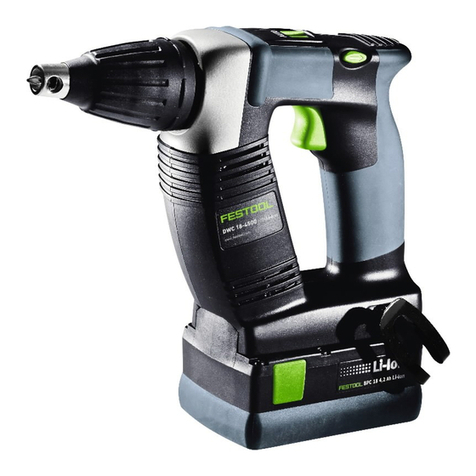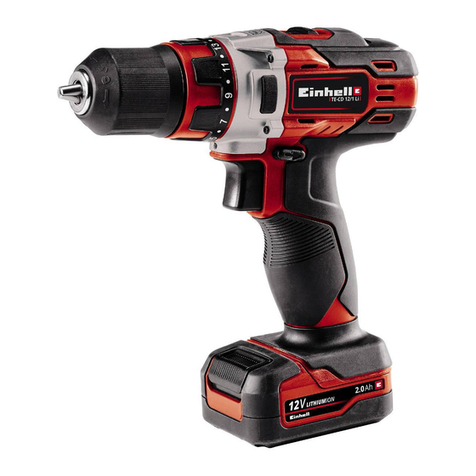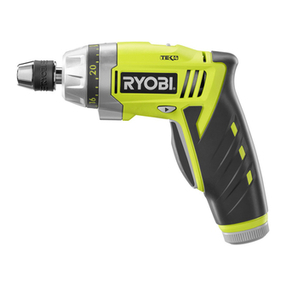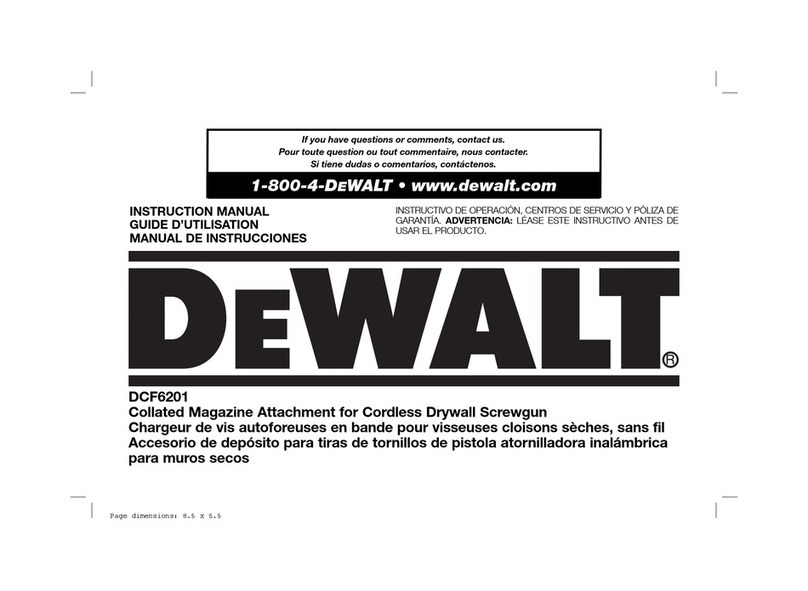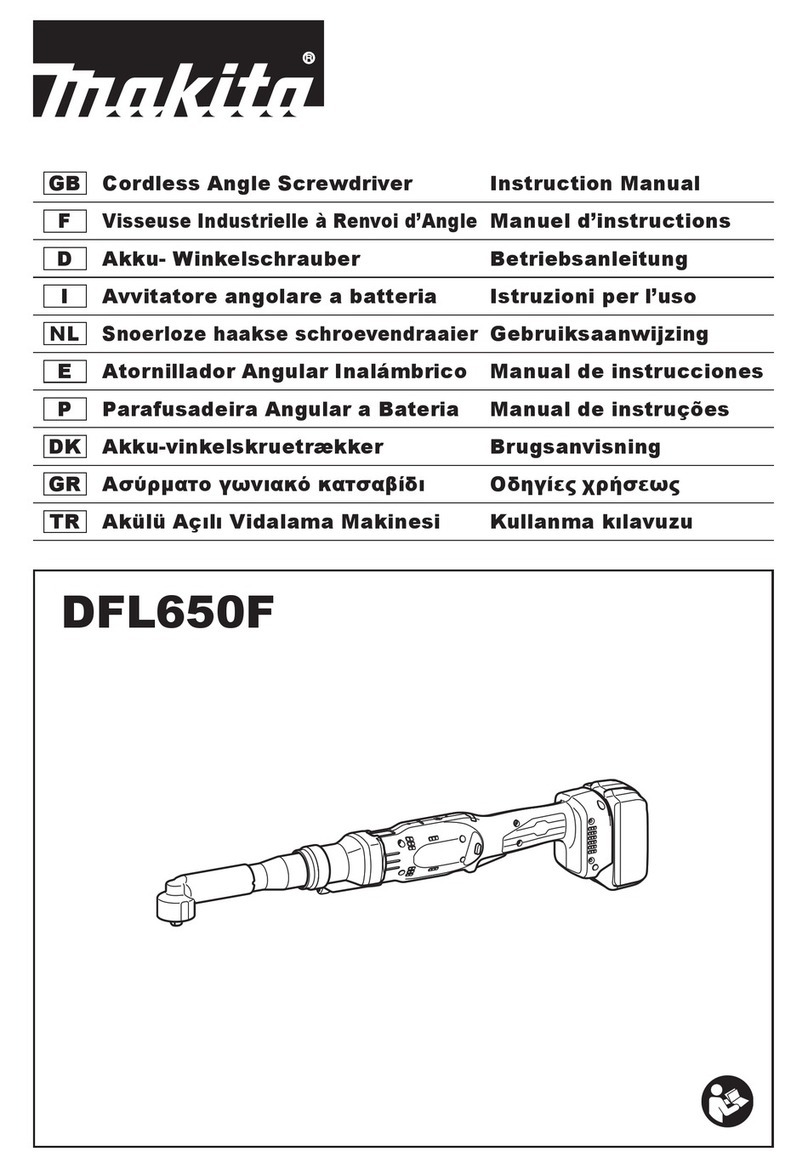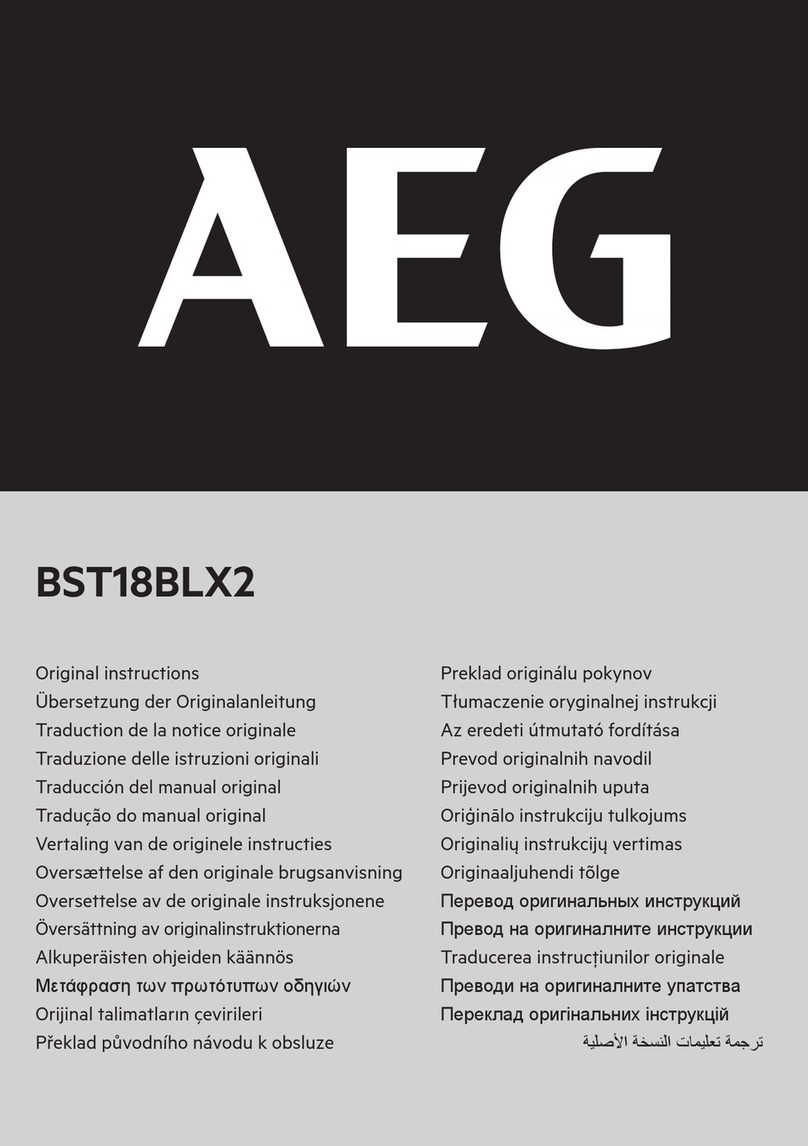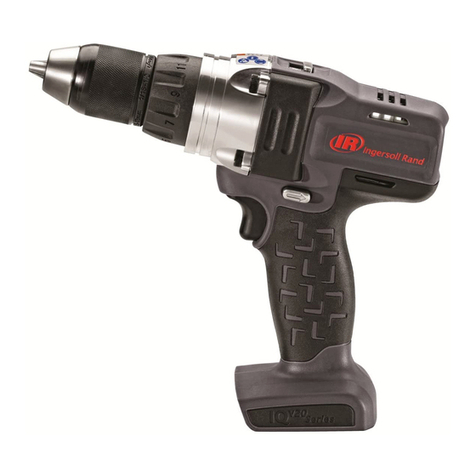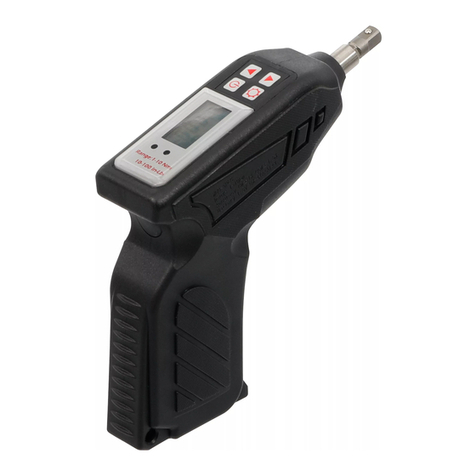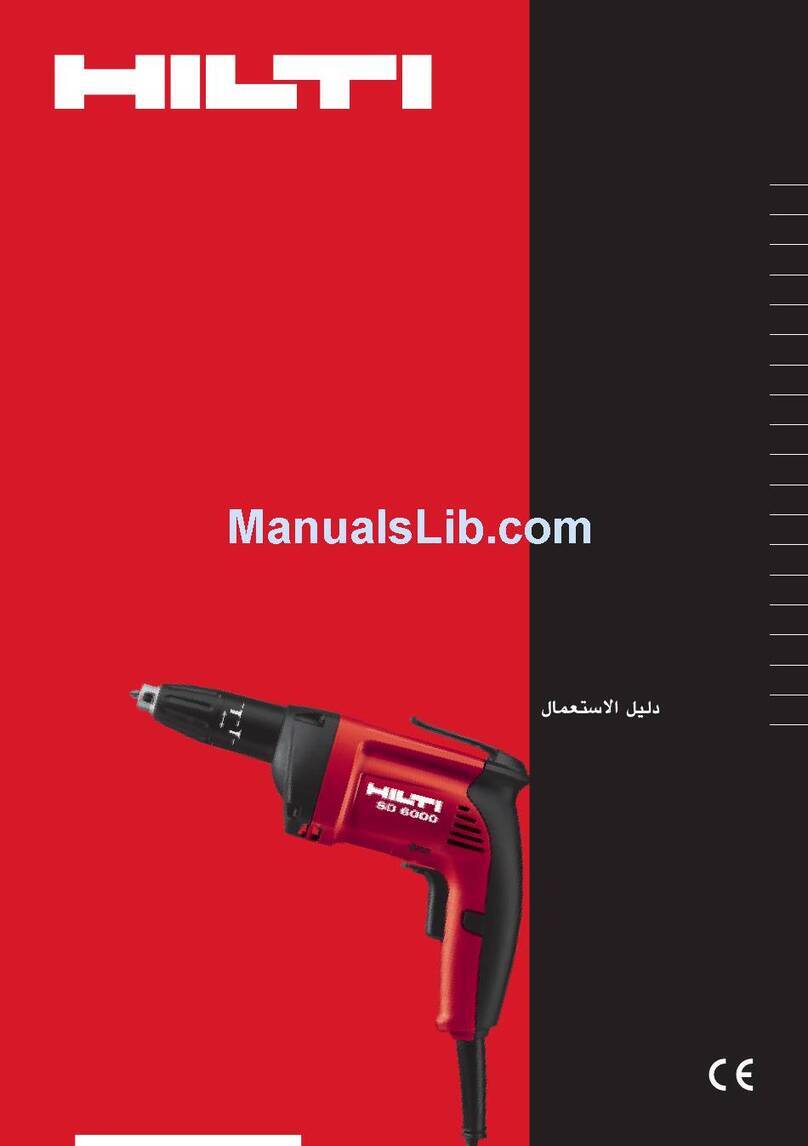
ENGLISH (Original Instructions)
4
4. Power Tool Use And Care
a. Do not force the power tool. Use the correct power
tool for your application. The correct power tool will
do the job better and safer at the rate for which it was
designed.
b. Do not use the power tool if the switch does not
turn it on and off. Any power tool that cannot be
controlled with the switch is dangerous and must be
repaired.
c. Disconnect the plug from the power source and/or
remove the battery, if detachable from the power
tool before making any adjustments, changing
accessories, or storing power tools. Such
preventive safety measures reduce the risk of starting
the power tool accidentally.
d. Store idle power tools out of the reach of children
and do not allow persons unfamiliar with the
power tool or these instructions to operate the
power tool. Power tools are dangerous in the hands
of untrained users.
e. Maintain power tools and accessories. Check
for misalignment or binding of moving parts,
breakage of parts and any other condition that
may affect the power tool’s operation. If damaged,
have the power tool repaired before use. Many
accidents are caused by poorly maintained power
tools.
f. Keep cutting tools sharp and clean. Properly
maintained cutting tools with sharp cutting edges are
less likely to bind and are easier to control.
g. Use the power tool, accessories and tool bits etc.
in accordance with these instructions, taking into
account the working conditions and the work to
be performed. Use of the power tool for operations
different from those intended could result in a
hazardous situation.
h. Keep handles and grasping surfaces dry, clean
and free from oil and grease. Slippery handles and
grasping surfaces do not allow for safe handling and
control of the tool in unexpected situations.
5. Battery tool use and care
a. Recharge only with the charger specied by the
manufacturer. A charger A charger that is suitable for
one type of battery may create a risk of re when used
with another battery.
b. Usepowertoolsonlywithspecicallydesignated
Battery. Use of any other Battery may create a risk of
injury and re.
c. When battery is not in use, keep it away from other
metal objects like paper clips, coins, keys, nails,
screws or other small metal objects that can make a
connection from one terminal to another. Shorting the
battery terminals together may cause burns or a re.
d. Underabusiveconditions,liquidmaybeejectedfrom
the battery, avoid contact. If contact accidentally
occurs, ush with water. If liquid contacts eyes,
additionally seek medical help. Liquid ejected from the
battery may cause irritation or burns.
e. Do not use a battery pack or tool that is damaged or
modied. Damaged or modied batteries may exhibit
unpredictable behavior resulting in re, explosion or risk
of injury.
f. Donotexposeabatterypackortooltoreorexcessive
temperature. Exposure to re or temperature above
130°C may cause explosion.
g. Follow all charging instructions and do not charge
thebatterypackortooloutsidethetemperaturerange
speciedintheinstructions. Charging improperly or
at temperatures outside the speciedrangemaydamage
the battery and increase the risk of re.
6. Service
a. Have your power tool serviced by a qualified
repair person using only identical replacement
parts. This will ensure that the safety of the power tool
is maintained.
b. Never service damaged battery packs. Service of
battery packs should only be performed by the
manufacturer or authorized service providers
ADDITIONAL SAFETY INSTRUCTIONS
Safety Warnings Specific for Screwdriver
a. Hold the power tool by insulated gripping surfaces,
when performing an operation where the fastener
may contact hidden wiring or its own cord. Fasteners
contacting a “live” wire may make exposed metal parts
of the power tool “live” and could give the operator an
electric shock.
ADDITIONAL SPECIFIC SAFETY RULES
a. Always use eye protection. All users and bystanders
must wear eye protection that conforms to ANSI Z87.1.
b. Clean out your tool often, especially after heavy
use. Dust and grit containing metal particles often
accumulate on interior surfaces and could create an
electric shock hazard.
c. Do not operate this tool for long periods of time.
Vibration caused by the operating action of this tool
may cause permanent injury to fingers, hands and
arms. Use gloves to provide extra cushion, take
frequent rest periods and limit daily time of use.
d. Air vents often cover moving parts and should be
avoided. Loose clothes, jewelry or long hair can be
caught in moving parts.
e. Air vents often cover moving parts and should be
avoided. Loose clothes, jewelry or long hair can be
caught in moving parts.
WARNING: ALWAYS use safety glasses.
Everyday eyeglasses are NOT safety glasses.
Also use face or dust if cutting operation is dusty.
ALWAYS WEAR CERTIFIED SAFETY
EQUIPMENT.

